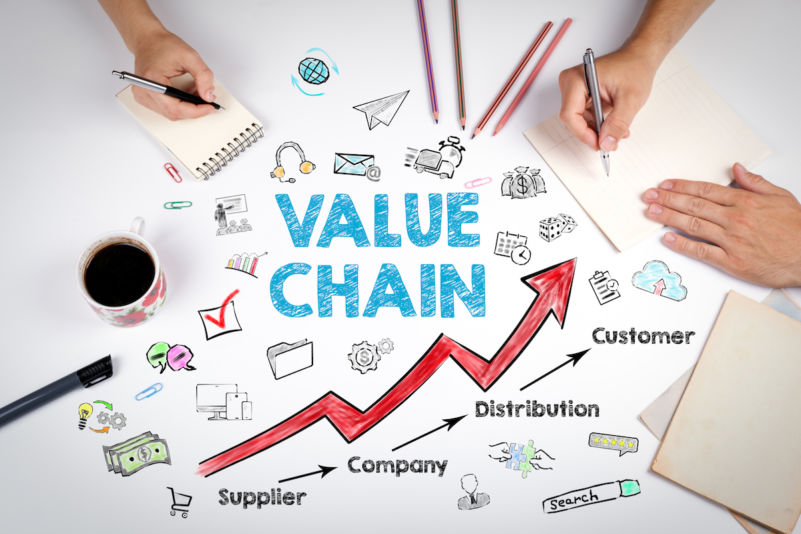Last Updated: September 2024
Sit back in your chair and think for a moment. What is it your company does that really drives profitability? Are you measuring these things (and these things only)? Our clients always have lots of data. When we first start talking to them, they’re measuring an impressive array of things. Impressive, that is, until they realise that most of this work is a waste of time.
Two revealing stories come to mind here. The first is the drunk man, scrabbling around under a street light to find his keys. He didn’t drop them there, but it’s where the light is. The second is the apocryphal tale of monkeys and bananas. One of the monkeys climbs a pole and, zap. He gets an electric shock. Another does the same and, sure enough. Another sore nose. Eventually, a new monkey joins the group and he’s stopped by the others from climbing the pole – classic groupthink. This is learned behaviour and you see something similar when companies measure things for the sake of measuring them (and not really knowing why).
Far better to look for correlations that inter-link and drive each other. Take an example I discussed with one of our recent Melting Pot podcast guests, John Ratliff, former CEO of Apple Tree Answers. He was measuring a CSat score in a similar way to the rest of his industry but it didn’t correlate with financial performance or staff engagement. It was only when he introduced NPS and started measuring staff happiness that the data started to line up with financial performance.
Finding the right metrics and honing in on the processes that drive profitability will lead you to a greater understanding of your value chain. And this knowledge is what you need to really drive the growth of your business.
What is a value chain?
The founder of modern strategy, Michael Porter, came up with the concept of a ‘Value Chain’ in the 1980s. It’s defined as ‘the set of processes or activities that a company performs in order to deliver a valuable product to the market’. So far, so obvious. But the art of finding a value chain that’s unique to your business is not straightforward.
That’s because most companies have a complex web of activities and processes, some of which add no value at all. And as a result, often the focus is in the wrong place.
Finding your value chain

When we first start discussing activities, processes and metrics with clients, there are competing demands. We’ll bring the Executive Team together and HR, Finance or Development will want equal priority given to their metrics. So there’s some re-education that needs to happen. If this is the same for you, you need to re-focus. All the attention should be on the processes and activities that make your company money. They’re the only ones that matter.
We map out everything on our ‘Key Process Flow Map’, looking at the areas that drive profitability. This is because net profit is the ultimate measure of competitive advantage. What do you do as a business that drives this?
How do you make money? You buy and sell some stuff. Maybe you do aftersales care and sell more stuff to existing customers. It’s not complicated. There are usually only four or five things. Work out what you do in each of these steps and then map out the supporting processes such as HR, IT and Finance.
Working out accountability
Having laid out this quote to cash process, identify who owns each bit. Also, what’s moving between each function. What exactly is it that moves from Marketing to Sales? It’s staggering how few people really know this. How much money are you making at each stage? Where are you generating the return? It’s not that people aren’t reporting on things. They may even be RAG scoring against data. But so often, it isn’t the right data.
Remember, you’re focusing on the activities that a customer goes through in your business that generate profits. Each one should be pulled out and put into a function flow map. Track what the output of each function is. The output of one should be the input of the next – this is what’s meant by ‘connected strategy’.
Spotting the constraints
Look for the constraint that might stop your business from achieving the growth you crave. A top tip is Eliyahu Goldratt’s book ‘The Goal’ here. It’s a gripping read, upending traditional obsessions with cost efficiency to focus on what really matters. You want to push the constraint of your business out to the market so that it’s in sales and marketing and not an internal process
Here’s a great example from one of our clients, Smartsourcing, an outsourcing company based in the Philippines. Mike Selfe, the founder, called me whilst I was on holiday in Spain. I could hear his excitement as he told me they’d just won the ‘Best Place To Work’ award in the Philippines. Result! This was one of their 3HAG goals and, right now, they’re on track to double their business year-on-year. Phenomenal progress. The reason? As part of defining their value chain, we’d identified the constraint of their company – attracting good enough people. As their business is outsourcing, their revenue is in multiples of people.
Once identified, this constraint was fed into their strategy. They’re a small business in Cebu City and not many people have heard of them. So, they created a new employer brand to attract top talent from competitors. They put in a new coffee bar and worked on their Glassdoor rating. If you google them, you see images of a fun workplace and happy staff. And its resulted in them winning an award previously won by Johnson & Johnson and Microsoft. It’s just so satisfying to be part of this journey.
Splitting out revenue from existing and new customers

So often, companies measure revenue but they’re not splitting it out into revenue from existing versus new clients. When they do, it’s eye-opening. Typically, growth in a start-up follows an S-shaped curve. In the beginning, 100% of revenue is from new customers so growth is rapid. At some point, the company falls into selling more to existing customers as this is easier than finding new ones. Growth starts to plateau.
Without a continual focus on business from new customers, companies will start to stagnate. Typically, they end up with a few big customers and become over-reliant on them. This is a danger zone. Something might change and a big customer leaves. Because there’s no solid pipeline of new, bigger customers, revenue crashes.
Working out leading and lagging indicators
Once you’ve identified the activities of your value chain, you need a clear plan. Starting off with marketing and sales to new customers, make a three to five projection. How long will it take you to double your company? How many new customers and of what type are you going to need? Who’s your ideal, core customer? Get really specific on this and work it back through.
OK, so Marketing – how many leads do they need to generate for Sales? Where will these come from? Are they in- or outbound, or from the channel? Are they referrals? Are you tracking all these things? Set a target and start gathering data. Then do the same for Sales, working out the lagging and leading indicators. Here, the lagging indicator might be revenue from new customers and the leading one might be demos done.
Take a legal software client of ours. Their two leading indicators are demos done and pipeline. Historically, their pipeline was non-existent but now they’re starting to get real clarity. Three months in, they can forecast sales with increasing confidence because they can see the link between demos done, pipeline developed, close rate and the degree of pipeline coverage needed. In their weekly management meetings, they’re starting to predict when they’re going to hit their sales number. Last month was the third-best sales month they’d ever had.
It all comes down to measuring the right stuff – the few things that are a direct line of sight between now and the goal of doubling (or trebling) revenue or gross profit. When we first met them, their sales goal was a random number unconnected in any way to activity.
Measuring the things that make the biggest difference
Going back to that conversation with John Ratliff, there may be other things that are a driving force behind your profitability. Employee happiness – that’s a big one. Are you measuring that? You’re likely to be measuring customer satisfaction in some way. It’s fair to say that, with the exception of Macquarie Telecom, none of our clients were measuring CSat in a way that was meaningful and actionable at the beginning of our relationship. Certainly, not in a way where they could see a link between measuring customer satisfaction and increasing revenue or referrals or driving down churn. Don’t just measure NPS for the hell of it. Measure it because it’s a leading indicator of some other things that you think would have a material impact on your quote to cash process.
So often, clients tell us they have ten types of customers. QCS were a good example. They provided policies and procedures to care homes, domiciliary care, GPs and dentists. But when we stripped it back and looked at their value chain, they weren’t making any money from some of these customer groups. So they’ve changed to focus more on care homes.
Likewise ECSC – a cyber-security client. Their old strategy had been ‘any customer is great because they might grow into something bigger’. As a result, they’d grown a long tail of unprofitable customers. The moment we started putting it all together – where they were trying to get to, what would be the same or different three years from now, they changed their approach. Now they’re laser-focused on the things that show genuine progress on their journey.
Written by business coach and leadership coaching expert Dominic Monkhouse. Contact him to schedule a call here. You can order your free copy of his book, Mind Your F**king Business here.

